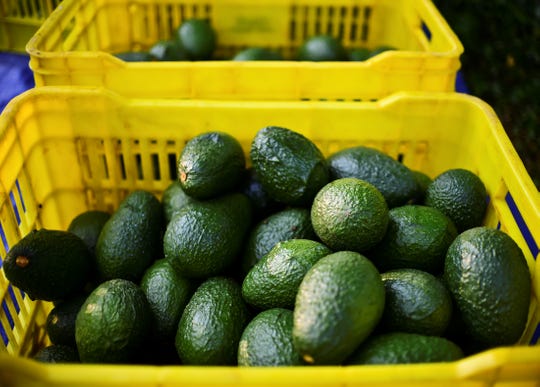
It’s not your imagination: Avocados are more expensive. But no, Trump’s tariffs aren’t to blame.
But there are a few reasons the price of the popular fruit has spiked and is likely to continue to rise in the coming weeks.
For the first week of July, the wholesale prices of mid-sized avocados from Mexico were 129% higher than this time last year, said David Magaña, vice president and senior analyst at Rabobank based in Fresno, California.
“This is the highest price for this time of the year in at least a decade, probably more,” Magaña said, noting the wholesale price was $84.25 for a 25-pound box compared to $37 the week of Independence Day 2018.
The increased wholesale price has been making its way to grocery stores.
According to the most recent Department of Agriculture weekly retail price report, the average national price of a Haas avocado was $2.10 July 5, compared to $1.17 from the July 6, 2018, report.
Liz Garrison, a nurse in St. Louis Park, Minnesota, said she was shocked when the bag of six small avocados she normally buys at Trader Joe’s was $6.50 this week. She’s paid $2.50 for the same bag on past trips.
“I eat an avocado a day. That’s a lot to spend on something I’m eating so frequently,” Garrison said.
Why are prices up?
Magaña outlined three main reasons fueling the increase.
“One is expanding global demands, including U.S. demand – it just continues to grow,” he said. “Avocados are not only consumed now for Super Bowl or during Cinco de Mayo celebrations but year-round consumption.”
California’s avocado season is coming to an end and was the smallest crop in more than a decade, he said.
“These high prices have to do with seasonal production in Mexico,” Magaña said. “It’s normally the lowest at this time of the year.”
Mexico is the top supplier of fruits and vegetables to the U.S., with $13 billion imported from the country last year. Almost 90% of avocados come from Mexico.
“We’ve had the possibility of (Mexico) tariffs and the border closing and also a few weeks ago the probability of tariffs on all commodities coming from Mexico, and we’ve observed a few price spikes,” Magaña said. “But now is only a supply-and-demand combination.”
How long will this last?
While prices may continue to increase over the next couple of weeks, the high prices may only be temporary.
“They should come down when the new Mexican production ramps up three, four weeks from now,” Magaña said.
Garrison hopes the high prices aren’t long-term. After rationing her last avocado from last week’s Trader Joe’s haul, she ended up getting avocados at the nearby Cub Foods for two for $4.
“If it’s something that’s short-lived like for a week or two, I wouldn’t mind spending the extra money,” she said.























